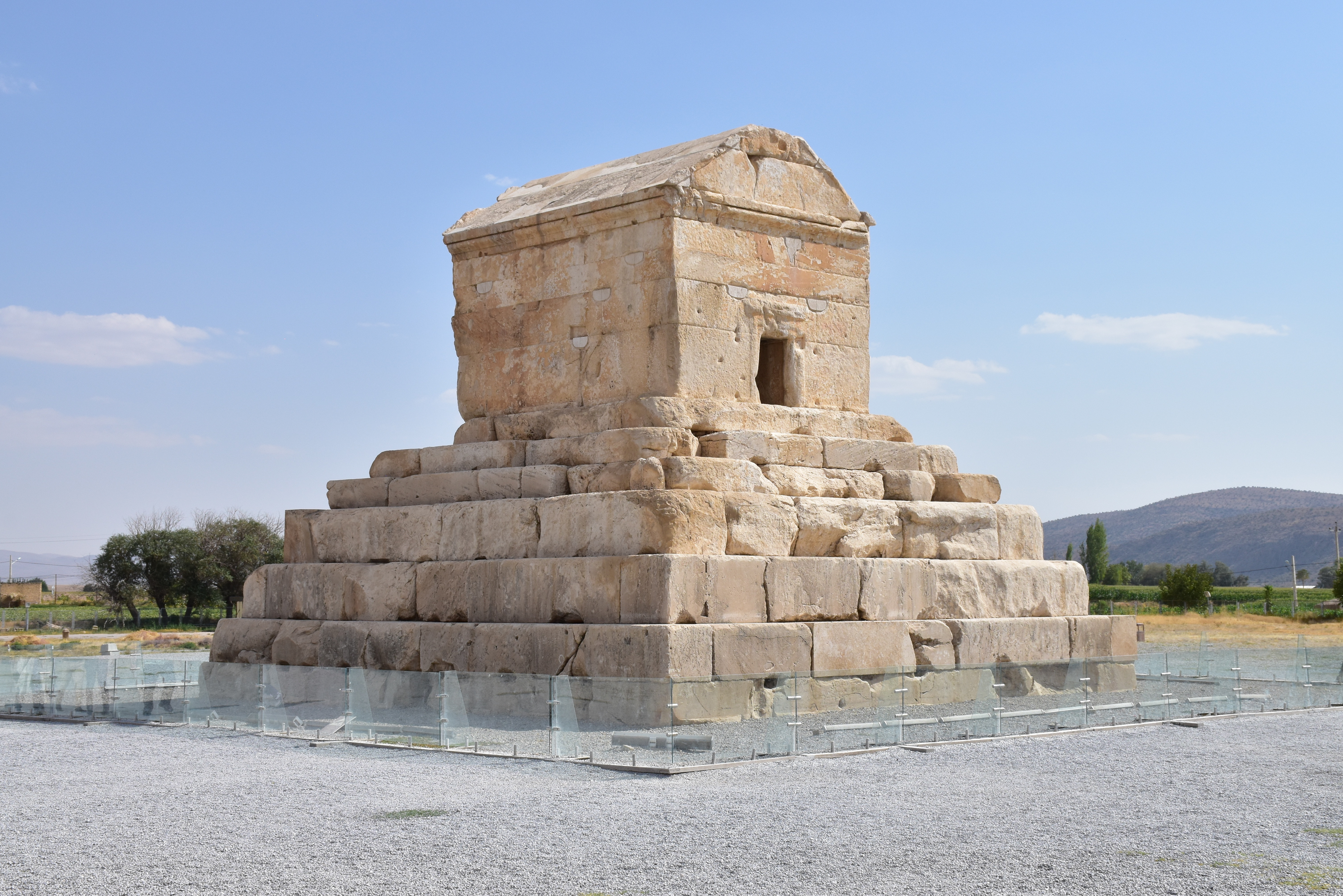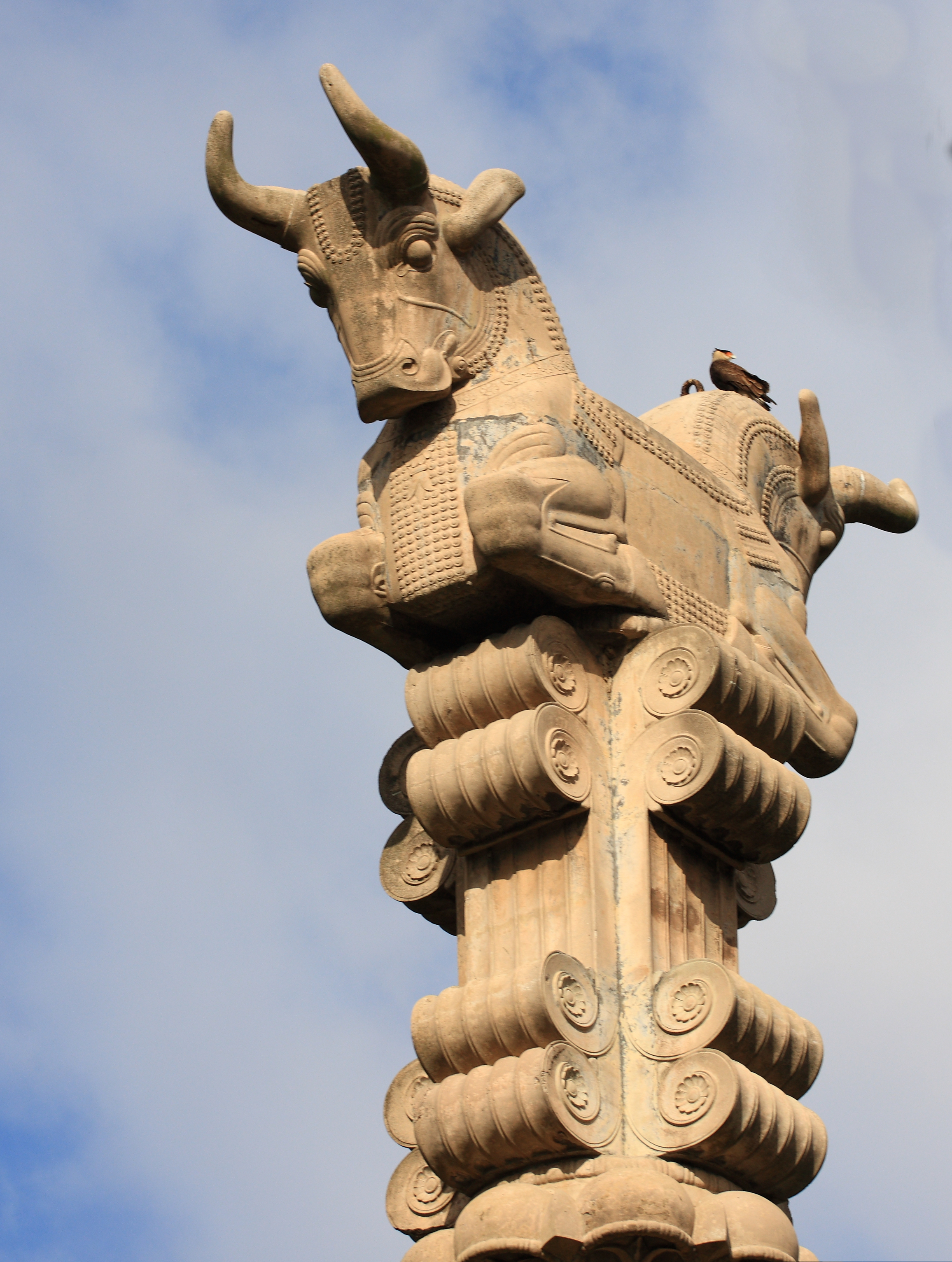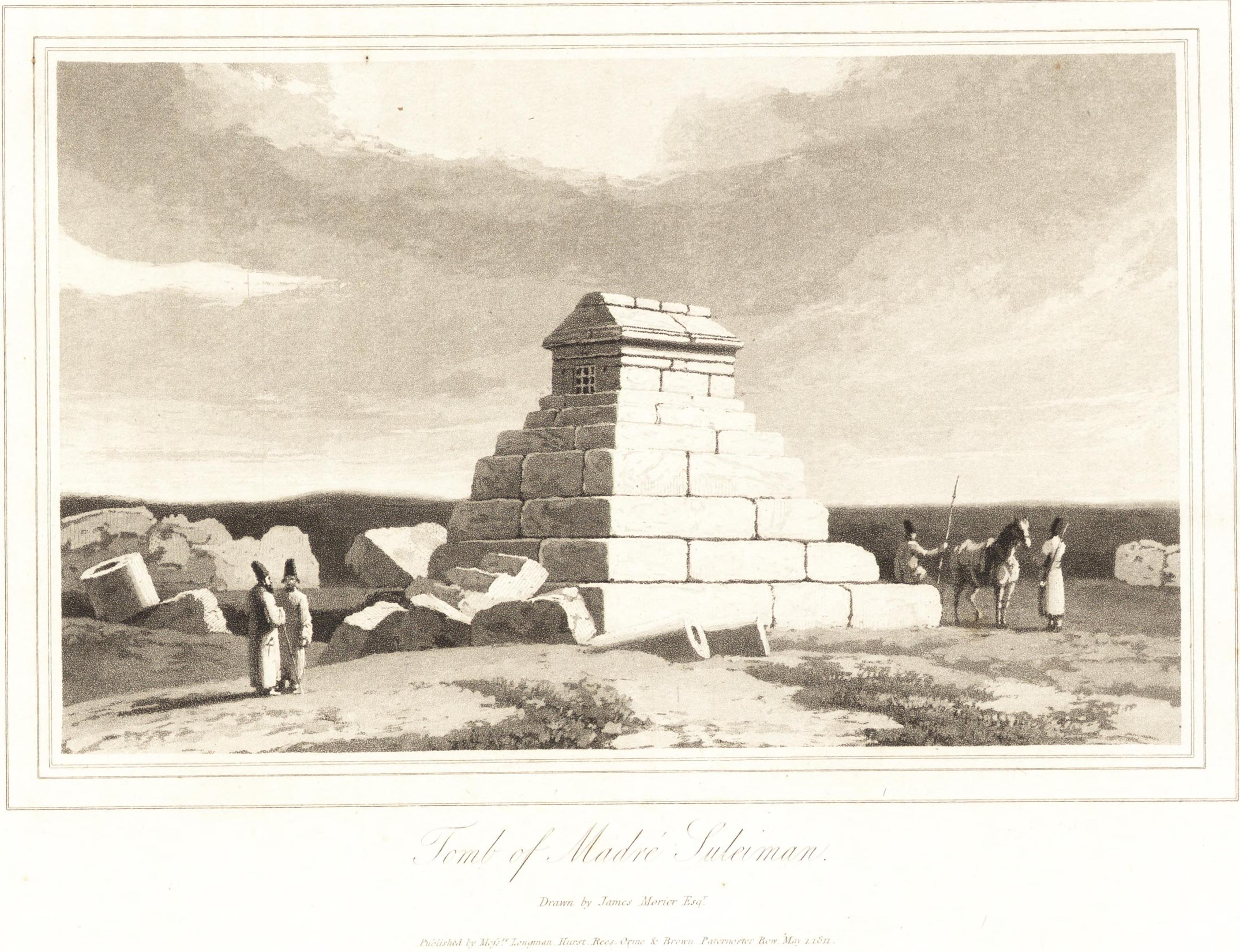|
Achaemenid Architecture
Achaemenid architecture includes all architectural achievements of the Achaemenid Empire, Achaemenid Persians manifesting in construction of spectacular cities used for governance and inhabitation (Persepolis, Susa, Ecbatana), temples made for worship and social gatherings (such as Zoroastrianism, Zoroastrian temples), and mausoleums erected in honor of fallen kings (such as the burial tomb of Cyrus the Great). Achaemenid architecture was influenced by Architecture of Mesopotamia, Mesopotamian, Assyrian, Ancient Egyptian architecture, Egyptian, Elamite, Lydian, Ancient Greek architecture, Greek and Medes, Median architecture.Boardman J. ''Persia and the West: An Archaeological Investigation of the Genesis of Achaemenid Art''. Thames & Hudson. 2000. p. 102-122.André-Salvini B. ''Forgotten Empire: The World of Ancient Persia''. University of California Press. 2005. p. 54.Talebian M. H. ''Persia and Greece: The role of cultural interactions in the architecture of Persepolis-Pasarga ... [...More Info...] [...Related Items...] OR: [Wikipedia] [Google] [Baidu] |
Persian Column
Persian columns or Persepolitan columns are the distinctive form of column developed in the Achaemenid architecture of ancient Persia, probably beginning shortly before 500 BCE. They are mainly known from Persepolis, where the massive main columns have a base, Fluting (architecture), fluted shaft, and a double-animal Capital (architecture), capital, most with bulls. Achaemenid palaces had enormous hypostyle halls called apadana, which were supported inside by several rows of columns. The Throne Hall or "Hall of a Hundred Columns" at Persepolis, measuring 70 × 70 metres was built by the Achaemenid king Artaxerxes I. The apadana hall is even larger. These often included a throne for the king and were used for grand ceremonial assemblies; the largest at Persepolis and Susa could fit ten thousand people at a time. The Achaemenids had little experience of stone architecture, but were able to import artists and craftsmen from around their empire to develop a hybrid imperial style dr ... [...More Info...] [...Related Items...] OR: [Wikipedia] [Google] [Baidu] |
Persepolis
Persepolis (; ; ) was the ceremonial capital of the Achaemenid Empire (). It is situated in the plains of Marvdasht, encircled by the southern Zagros mountains, Fars province of Iran. It is one of the key Iranian cultural heritage sites and a UNESCO World Heritage Site. The earliest remains of Persepolis date back to 515 BC. The city, acting as a major center for the empire, housed a palace complex and citadel designed to serve as the focal point for governance and ceremonial activities. It exemplifies the Achaemenid style of architecture. The complex was taken by the army of Alexander the Great in 330 BC, and soon after, its wooden parts were completely destroyed by fire, likely deliberately. The function of Persepolis remains unclear. It was not one of the largest cities in ancient Iran, let alone the rest of the empire, but appears to have been a grand ceremonial complex that was only occupied seasonally; the complex was raised high on a walled platform, with five "palac ... [...More Info...] [...Related Items...] OR: [Wikipedia] [Google] [Baidu] |
Ancient Greek Architecture
Ancient Greek architecture came from the Greeks, or Hellenes, whose Ancient Greece, culture flourished on the Greek mainland, the Peloponnese, the Aegean Islands, and in colonies in Asia Minor, Anatolia and Italy for a period from about 900 BC until the 1st century AD, with the earliest remaining architectural works dating from around 600 BC. Ancient Greek architecture is best known for its Ancient Greek temple, temples, many of which are found throughout the region, with the Parthenon regarded, now as in ancient times, as the prime example. Most remains are very incomplete ruins, but a number survive substantially intact, mostly outside modern Greece. The second important type of building that survives all over the Hellenic world is the Theatre of Ancient Greece#Characteristics of the buildings, open-air theatre, with the earliest dating from around 525–480 BC. Other architectural forms that are still in evidence are the processional gateway (''propylon''), the public square ... [...More Info...] [...Related Items...] OR: [Wikipedia] [Google] [Baidu] |
Limestone
Limestone is a type of carbonate rock, carbonate sedimentary rock which is the main source of the material Lime (material), lime. It is composed mostly of the minerals calcite and aragonite, which are different Polymorphism (materials science), crystal forms of calcium carbonate . Limestone forms when these minerals Precipitation (chemistry), precipitate out of water containing dissolved calcium. This can take place through both biological and nonbiological processes, though biological processes, such as the accumulation of corals and shells in the sea, have likely been more important for the last 540 million years. Limestone often contains fossils which provide scientists with information on ancient environments and on the evolution of life. About 20% to 25% of sedimentary rock is carbonate rock, and most of this is limestone. The remaining carbonate rock is mostly Dolomite (rock), dolomite, a closely related rock, which contains a high percentage of the mineral Dolomite (mine ... [...More Info...] [...Related Items...] OR: [Wikipedia] [Google] [Baidu] |
Ancient History
Ancient history is a time period from the History of writing, beginning of writing and recorded human history through late antiquity. The span of recorded history is roughly 5,000 years, beginning with the development of Sumerian language, Sumerian cuneiform script. Ancient history covers all continents inhabited by humans in the period 3000 BCAD 500, ending with the Early Muslim conquests, expansion of Islam in late antiquity. The three-age system periodises ancient history into the Stone Age, the Bronze Age, and the Iron Age, with recorded history generally considered to begin with the Bronze Age. The start and end of the three ages vary between world regions. In many regions the Bronze Age is generally considered to begin a few centuries prior to 3000 BC, while the end of the Iron Age varies from the early first millennium BC in some regions to the late first millennium AD in others. During the time period of ancient history, the world population was Exponential growth, e ... [...More Info...] [...Related Items...] OR: [Wikipedia] [Google] [Baidu] |
Tomb Of Cyrus
The tomb of Cyrus the Great is located in Pasargadae, which was the first capital city of his Achaemenid Empire and is now an archaeological site in the Fars Province of Iran. Prior to being identified with Cyrus the Great by the British diplomat James Justinian Morier in 1812, it was attributed to a certain "Mother of Solomon" in legendary accounts that had emerged at some point after the Muslim conquest of Iran; Morier's understanding, drawing upon the works of the German traveller Johan Albrecht de Mandelslo, was that it referred to the Arab woman Wallada bint al-Abbas ibn al-Jaz, who was the mother of Sulayman ibn Abd al-Malik () of the Umayyad Caliphate. Similar beliefs suggested to the Venetian explorer Giosafat Barbaro in the 15th century asserted that it was the resting place of Bathsheba, who was the mother of Solomon () of the Kingdom of Israel and Judah. Morier ultimately dismissed the tomb's contemporary associations as fallacious, noting that its architecture ... [...More Info...] [...Related Items...] OR: [Wikipedia] [Google] [Baidu] |
Pasargad Tomb Cyrus3
Pasargadae (; ) was the capital of the Achaemenid Empire under Cyrus the Great (559–530 BC), located just north of the town of Madar-e-Soleyman and about to the northeast of the city of Shiraz. It is one of Iran's UNESCO World Heritage Sites. It is considered to be the location of the Tomb of Cyrus, a tomb previously attributed to ''Madar-e-Soleyman'', the "Mother of Solomon". It is a national tourist site administered by the Iranian culture of world heritage. History Pasargadae was founded in the 6th century BCE as the first capital of the Achaemenid Empire by Cyrus the Great, near the site of his victory over the Median king Astyages in 550 BCE. The city remained the Achaemenid capital until Darius moved it to Persepolis. The archaeological site covers and includes a structure commonly believed to be the mausoleum of Cyrus, the fortress of Toll-e Takht sitting on top of a nearby hill, and the remains of two royal palaces and gardens. Pasargadae Persian Gardens provide ... [...More Info...] [...Related Items...] OR: [Wikipedia] [Google] [Baidu] |
Alexander The Great
Alexander III of Macedon (; 20/21 July 356 BC – 10/11 June 323 BC), most commonly known as Alexander the Great, was a king of the Ancient Greece, ancient Greek kingdom of Macedonia (ancient kingdom), Macedon. He succeeded his father Philip II of Macedon, Philip II to the throne in 336 BC at the age of 20 and spent most of his ruling years conducting Wars of Alexander the Great, a lengthy military campaign throughout West Asia, Western Asia, Central Asia, parts of South Asia, and ancient Egypt, Egypt. By the age of 30, he had created one of the List of largest empires, largest empires in history, stretching from History of Greece, Greece to northwestern History of India, India. He was undefeated in battle and is widely considered to be one of history's greatest and most successful military commanders. Until the age of 16, Alexander was tutored by Aristotle. In 335 BC, shortly after his assumption of kingship over Macedon, he Alexander's Balkan campaign, campaigned in the Bal ... [...More Info...] [...Related Items...] OR: [Wikipedia] [Google] [Baidu] |
Darius The Great
Darius I ( ; – 486 BCE), commonly known as Darius the Great, was the third King of Kings of the Achaemenid Empire, reigning from 522 BCE until his death in 486 BCE. He ruled the empire at its territorial peak, when it included much of West Asia, parts of the Balkans (Skudra, Thrace–Achaemenid Macedonia, Macedonia and Paeonia (kingdom), Paeonia) and the Caucasus, most of the Black Sea's coastal regions, Central Asia, the Achaemenid conquest of the Indus Valley, Indus Valley in the far east, and portions of North Africa and Northeast Africa including History of Persian Egypt, Egypt (), eastern ancient Libya, Libya, and coastal The Sudans, Sudan. Darius ascended the throne by overthrowing the Achaemenid monarch Bardiya (or ''Smerdis''), who he claimed was in fact an imposter named Gaumata. The new king met with rebellions throughout the empire but quelled each of them; a major event in Darius's life was his expedition to subjugate Ancient Greece, Greece and punish Classical At ... [...More Info...] [...Related Items...] OR: [Wikipedia] [Google] [Baidu] |
Sasanian Dynasty
The Sasanian dynasty (also known as the Sassanids or the House of Sasan) was the house that founded the Sasanian Empire of Iran, ruling this empire from 224 to 651 AD. It began with Ardashir I, who named the dynasty in honour of his predecessor, Sasan. The Shahanshah was the sole regent, head of state and head of government of the empire. At times, power shifted de facto to other officials, namely the spahbed. Upon the empire's conquest by the Islamic caliphate in 651, members of the imperial family fled in exile to China following the death of Yazdegerd III, where they would become accepted as members of the imperial court by Emperor Gaozong of Tang. Although there would be numerous attempts to invade Islamic Persia with Chinese support, this branch of Sasanids would remain in China indefinitely. Narsieh, grandson of Yazdegerd and last recorded Sasanid in China, would adopt the surname Li (李) in honor of the Chinese imperial family. Origins Modern Scholars View The origin o ... [...More Info...] [...Related Items...] OR: [Wikipedia] [Google] [Baidu] |
Sasanian Empire
The Sasanian Empire (), officially Eranshahr ( , "Empire of the Iranian peoples, Iranians"), was an List of monarchs of Iran, Iranian empire that was founded and ruled by the House of Sasan from 224 to 651. Enduring for over four centuries, the length of the Sasanian dynasty's reign over ancient Iran was second only to the directly preceding Arsacid dynasty of Parthia. Founded by Ardashir I, whose rise coincided with the decline of Arsacid influence in the face of both internal and external strife, the House of Sasan was highly determined to restore the legacy of the Achaemenid Empire by expanding and consolidating the Iranian nation's dominions. Most notably, after defeating Artabanus IV of Parthia during the Battle of Hormozdgan in 224, it began competing far more zealously with the neighbouring Roman Empire than the Arsacids had, thus sparking a new phase of the Roman–Iranian Wars. This effort by Ardashir's dynasty ultimately re-established Iran as a major power of late an ... [...More Info...] [...Related Items...] OR: [Wikipedia] [Google] [Baidu] |







